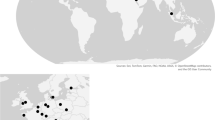Use your head! What counts, it is those little details (Cavendish).
Abstract
Sources of inaccuracies in thermogravimetry and the ways of minimizing them are described. The disturbances related to buoyancy forces and disturbances caused by drag forces from local gas circulations have been studied and interpreted. Procedures leading to parts-per-million precision have been tested and proven. Recommendations for handling corrosive gases, contaminating fumes or smoke, and vapors in TGs are provided. The influence of heating rate on the accuracy of TG determination of decomposition temperature, particularly with reference to controlled rate thermal analysis (CRTA), is discussed. Differences in the degree of straightforwardness of the temperature-related data produced by CRTA methods (dynamic heating rate, stepwise isothermal) are discussed. Ways of plotting TG data, including the controversy over blank-run subtraction, and questioning plotting mass versus temperature alone, are discussed. The unsatisfactory accuracy of determination of decomposition temperature for gas-producing reversible processes is analyzed, and a remedy is proposed. A way of linking thermoanalytical data to industrial production of lime is proposed.



Similar content being viewed by others
References
Czarnecki J. Comparison of various configurations of TG instruments from the viewpoint of reliability of the results. http://sites.google.com/site/solutionsforthermogravimetry/Home (2014). Accessed 15 Dec 2014.
Czarnecki J, Koga N, Sestakova V, Sestak J. Factors affecting the experimentally resolved shapes of TG curves. J Therm Anal. 1992;38:575.
Czarnecki J, Sestak J. Practical thermogravimetry. J Therm Anal Calorim. 2000;60:759–78.
Czarnecki J. Practical thermogravimetry In: Ostrava seminar on thermal analysis 2009, Ostrava. http://sites.google.com/site/solutionsforthermogravimetry/Home (2009). Accessed 15 Dec 2014.
Czarnecki J. Vapor generation and thermogravimetry in vapors. 2014. http://sites.google.com/site/solutionsforthermogravimetry/Home. Accessed 15 Dec 2014.
Czanderna AW, Wolsky SP. Microweighing in vacuum and controlled environment. Amsterdam: Elsevier; 1980. ISBN:0-444-868-7.
Kemula W, Czarnecki J. Kinetics of heterogeneous thermal decomposition with special reference to the complex Ni(NCS)2(gamma-picoline)4. Pol J Chem. 1978;52:613.
Paulik F, Paulik J. Quasi-isothermal thermogravimetry, thermal analysis, vol. 1. In: Proceedings 3rd ICTA. 1971. p. 161.
Šesták J, Holba P, Živkovič Ž. Doubts on Kissinger’s method of kinetic evaluation based on several conceptual models showing the difference between the maximum of reaction rate and the extreme of a DTA. J Min Metall B. 2014;50:77–81.
Paulik F, Paulik J. Kinetic studies of thermal decomposition reactions under quasi-isothermal and quasi-isobaric conditions by means of the derivatograph. Anal Chim Acta. 1971;56:328.
Rouquerol J. Method d’analyse thermique sous faible pression et a vitesse de composition constante. Memoires Presentees a la Societe Chimique. 1963.
Ortega A. Isoconversional method in controlled rate TA. Thermochim Acta. 1997;298(1–2):1.
Málek J, Šesták J, Rouquerol F, Rouquerol J, Criado JM. Ortega a possibilities of two non-isothermal procedures (temperature- or rate-controlled) for kinetic studies. J Thermal Anal. 1992;38:71–87.
Šesták J. Science of heat and thermophysical studies: a generalized approach to thermal analysis. Amsterdam: Elsevier; 2005. ISBN:0-444-51954-8.
Šesták J. Is the original Kissinger equation obsolete today: not obsolete the entire non-isothermal kinetics? J Therm Anal Calorim. 2014;117:3–7.
Koga N, Sesták J, Simon P. Some fundamental and historical aspects of phenomenological kinetics in solid-state studied by thermal analysis. In: Sesták J, Simon P, editors. Thermal analysis of micro-, nano- and non-crystalline materials. Berlin: Springer; 2013. p. 1–45. ISBN:978-90-481-3149-5.
Sauerbrunn S, Gill P. Decomposition kinetics using TGA, TA instruments, Brochure TA-075. p. 3 http://www.tainstruments.co.jp/application/pdf/Thermal_Library/Applications_Briefs/TA075.PDF (2014). Accessed 15 Dec 2014.
Ozawa T. Controlled rate thermogravimetry: new usefulness of controlled rate thermogravimetry revealed by decomposition of polyimide. J Therm Anal Calorim. 2000;59(1–2):375–84.
TA Instruments’ video: superior TGA design. 2014. http://www.youtube.com/watch?v=E6GzH8GFv5E&feature=plcp. Accessed 15 Dec 2014.
Author information
Authors and Affiliations
Corresponding author
Rights and permissions
About this article
Cite this article
Czarnecki, J. Precision thermogravimetry. J Therm Anal Calorim 120, 139–147 (2015). https://doi.org/10.1007/s10973-014-4384-0
Received:
Accepted:
Published:
Issue Date:
DOI: https://doi.org/10.1007/s10973-014-4384-0




